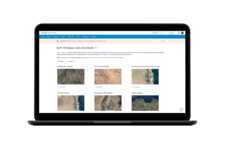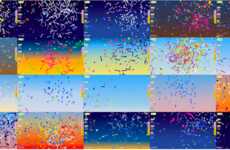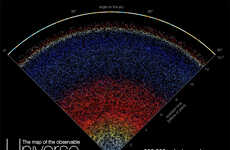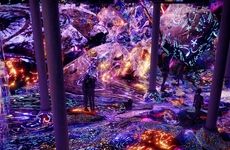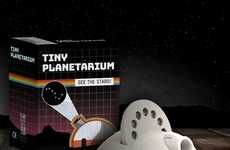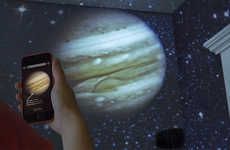
Google's 100,000 Star Visualization Project is Out of This World
Ariel Weber — November 18, 2012 — Tech
References: workshop.chromeexperiments & adverblog
Google has once again stayed ahead of the curve with its 100,000 Stars Visualization Project available exclusively on the Google Chrome browser.
From what looks like thousands of little specks of glitter, the visualizer lets you explore the galaxy of stars to your heart's content. With a zoom in and out function, you can get as close or as far as you wish and features real location data about over hundred thousand nearby stars, which includes 87 major-themed stars and solar systems.
With ominus music playing in the background and graphic imagery of the stars in front of you, the 100,000 Stars Visualization Project from the geniuses over at Google allows you to open your eyes to the world beyond what we are able to see with the naked eye.
From what looks like thousands of little specks of glitter, the visualizer lets you explore the galaxy of stars to your heart's content. With a zoom in and out function, you can get as close or as far as you wish and features real location data about over hundred thousand nearby stars, which includes 87 major-themed stars and solar systems.
With ominus music playing in the background and graphic imagery of the stars in front of you, the 100,000 Stars Visualization Project from the geniuses over at Google allows you to open your eyes to the world beyond what we are able to see with the naked eye.
Trend Themes
1. Interactive Galaxy Visualizers - Opportunity to create immersive and interactive virtual reality experiences that explore the wonders of the galaxy.
2. Real Location Data - Opportunity to develop location-based services and technology that utilize real location data of stars and solar systems.
3. Interactive Web Visualizations - Opportunity to create engaging and educational web visualizations that provide users with interactive and informative experiences.
Industry Implications
1. Technology - Tech companies can leverage the interactive galaxy visualizers to enhance their virtual reality offerings and create new immersive experiences.
2. Education - Educational institutions can incorporate the visualizers into their astronomy curriculum to provide students with a more interactive and engaging learning experience.
3. Tourism - Travel and tourism companies can use the real location data to offer stargazing tours and experiences, providing a unique and educational offering for travelers.
5.5
Score
Popularity
Activity
Freshness


